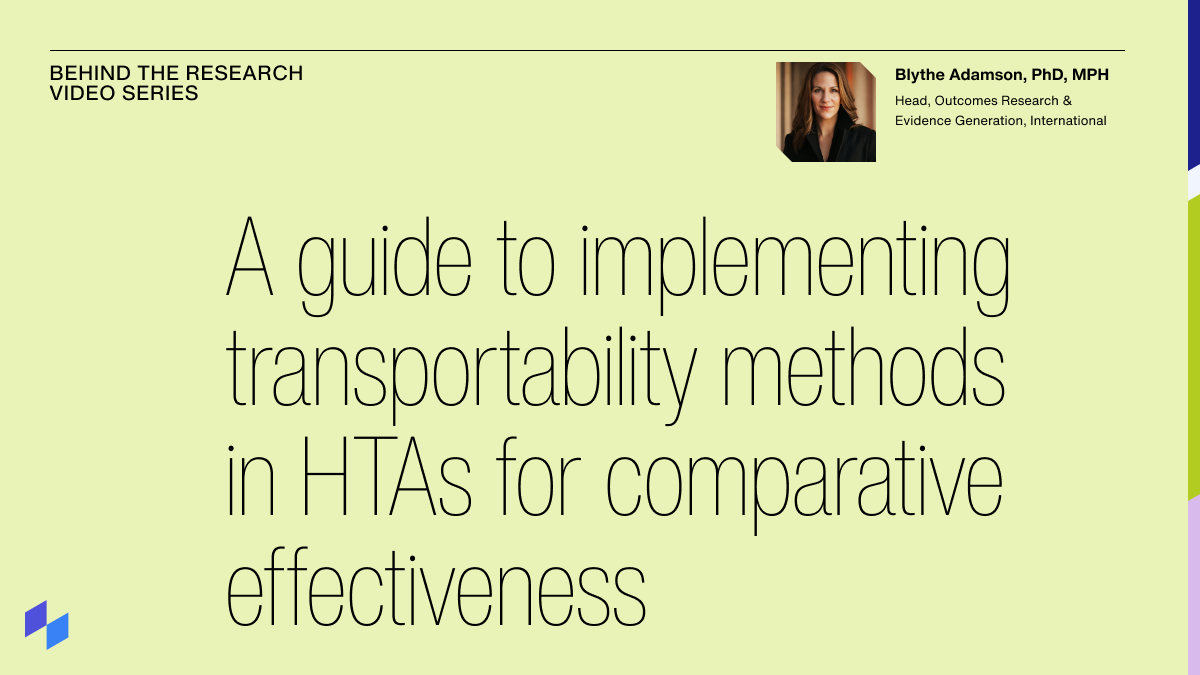
Our summary
Health technology assessment (HTA) agencies focus on internal validity when evaluating comparative effectiveness evidence. However, the growing use of real-world data from various countries has sparked concerns about external validity or “transportability.” This concern has led to a preference for local data despite methods available to address cross-country differences.
Despite these available methods, HTA agencies have been slow to adopt them, possibly due to limited understanding or uncertainties about their application within existing frameworks.
This article serves as an introduction to the concept of transportability, explaining its assumptions and methods for identification and adjustment. Additionally, it discusses crucial considerations within HTA settings, including identifying effect modifiers, selecting the target population, determining estimands, choosing study samples, and seamlessly integrating evaluations of transportability into HTA submission and decision-making processes.
Why this matters
This research is essential for HTA professionals as it addresses the critical concept of transportability in comparative-effectiveness evidence. By exploring various methods to enhance data applicability across diverse populations, the article provides practical insights for HTA evaluations. The integration of these techniques into existing HTA frameworks offers valuable guidance for decision-makers. Moreover, the article emphasizes the need for clear methodological guidelines and further research to facilitate widespread adoption, ultimately strengthening the credibility of HTA evaluations and supporting well-informed decision-making in healthcare.